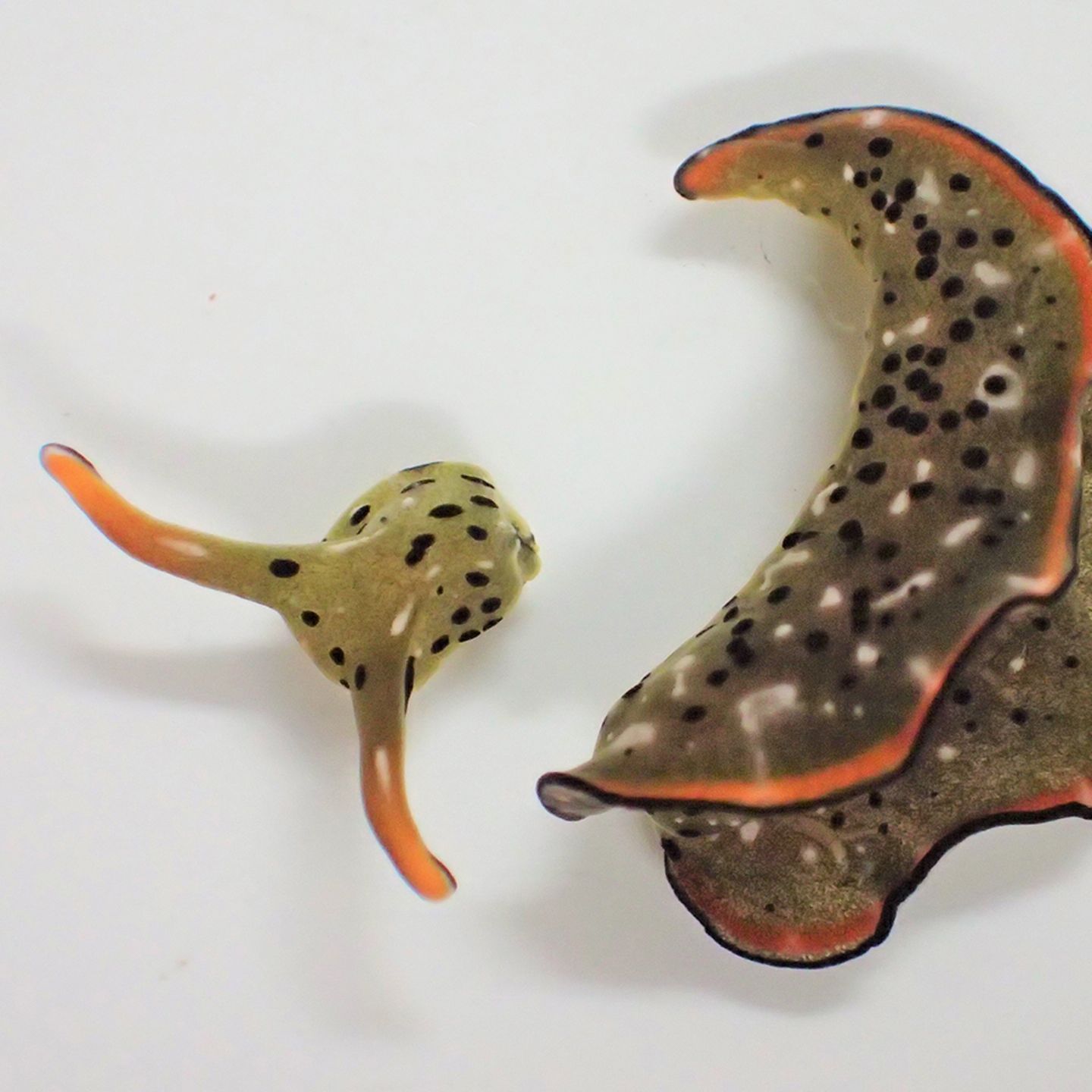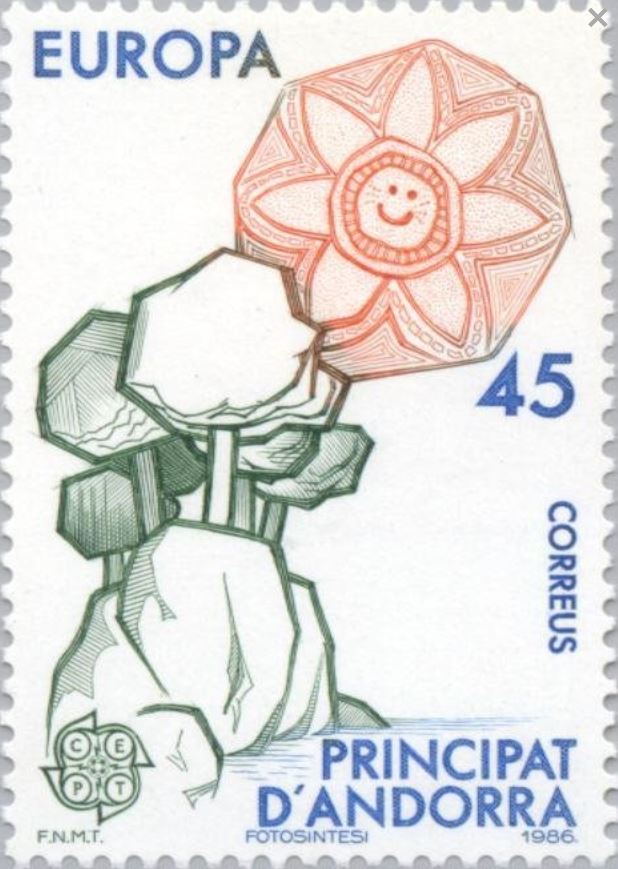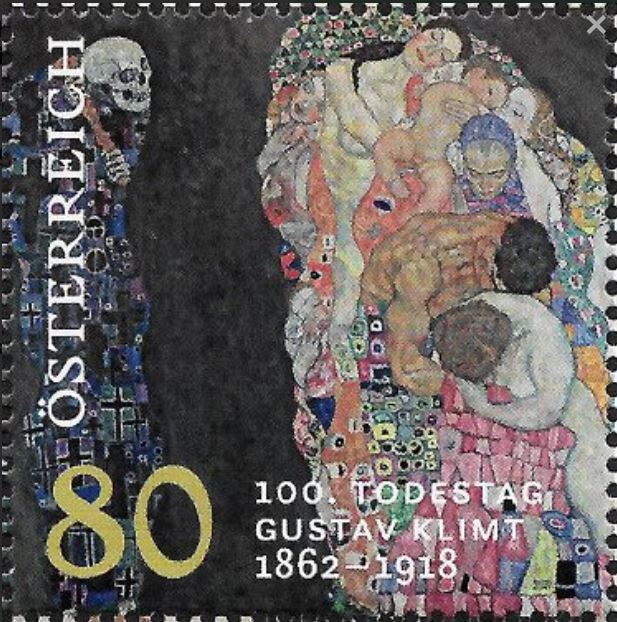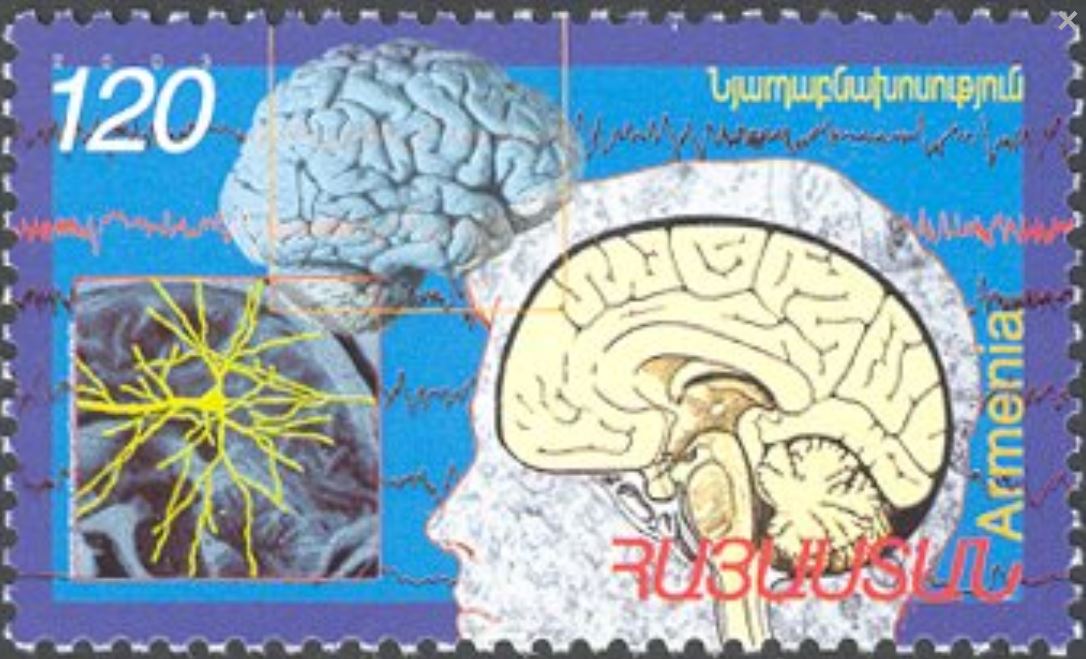
A near relative of Elysia marginata.
There was a spooky report published this January in Current Biology: it reports of an extreme form of self-mutilation: Researchers have discovered for the first time an animal species that can regenerate its entire body: the sea-snail Elysia marginata. To do this, the sea snail spontaneously separates the body, including all organs (also the heart), behind its head. While the head lives on and grows a new body within 20 days, the rest of the body dies. You can watch a video of this here.

The head still walking around besides the separated dying body. Impressive in a video (see text).
How the head can survive without a heart and the rest of the body is still mysterious. There are only attempts to explain it. The most convincing one is, that their digestive gland, which extends into the head, can take chloroplasts from consumed algae into their cells. There, these so-called kleptoplasts produce nutrients via photosynthesis. Thus, the head might live for 20 days without the body from the photosynthesis of these kleptoplasts.

Photosynthesis
Another unsolved question? Why does the snail do this? The researchers having observed this phenomenon for the first time, think it might be to get rid of a body infested with parasites.
Altogether, by getting rid of the whole body, Elysia’s head outruns by far the regenerative capacity of lizards, salamanders, axolotls, freshwater polyps, and even some arthropods: they can regenerate a leg or a tail, but never a whole body. In these cases, special stem cells at the “predetermined breaking points” ensure that the tissue grows back. The mechanism behind Elysia’s self-mutilation is still unclear.

Death and life of Gustav Klimt
Another spooky report – this time about life after death in humans – was published just this year. No regeneration but in the hours after we die certain cells in the human brain are still active.
To detect this for us unusual finding researchers analyzed gene expression in fresh brain tissue. During certain surgeries to treat e.g. epilepsy, epileptic brain tissue is removed to help eliminate seizures. Not all of the tissue is needed for pathological diagnosis, so some can be used for research. This is the tissue, the researcher analyzed in their study: They collected the brain tissue and analyzed it at multiple times after removal to simulate the post-mortem interval and death.

Also in the human brain cells grow and are active beyond the ceasing of heart beat.
They found that genes active in neurons rapidly ceased their expression. In contrast, the expression of genes within glial cells increased for
at least 24 h after tissue resection. Glial cells form a supporting framework for nerve cells, but also ensure their electrical insulation through their sheathing. Furthermore, glial cells are significantly involved in the transport of substances and the exchange of fluids as well as in the maintenance of homeostasis in the brain and combating infections via mediating inflammatory responses. After death, these cells increase their activity and grow to gargantuan proportions. They grow and sprout long arm-like appendages for many hours after death. Maybe just because their job is to clean things up after injuries of the brain which definitely is evoked by the oxygen deprivation due to interruption of blood supply. This clearly implicates that not everything in the brain stops when the heart stops beating…….., whatever this means ………..
Sources:
Sayaka Mitoh, Yoichi Yusa – Extreme autotomy and whole-body regeneration in photosynthetic sea slugs. Curr Biol. 2021 Mar 8;31(5):R233-R234. doi: 10.1016/j.cub.2021.01.014.
Fabien Dachet, James B Brown, Tibor Valyi-Nagy, Kunwar D Narayan, Anna Serafini, Nathan Boley, Thomas R Gingeras, Susan E Celniker, Gayatry Mohapatra, Jeffrey A Loeb – Selective time-dependent changes in activity and cell-specific gene expression in human postmortem brain. Sci Rep . 2021 Mar 23;11(1):6078. doi: 10.1038/s41598-021-85801-6.
